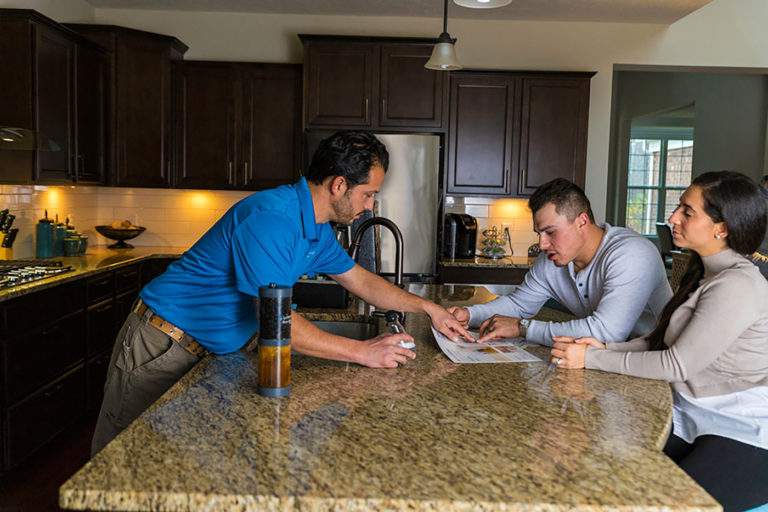The hardness of your water can change the quality of water in your home. When water softness in another location is different from the quality at your house, you can tell when there’s a change in your hair or skin after using that water. If your water feels different from how it usually does, this could mean that you need a water softener replacement.
Water softeners have many benefits for a household and can make investing in an installation an easy choice to make. At Kinetico of San Antonio, we’re here to share some things to think about when choosing the best water softener for your home.
Measure Your Water Hardness
When measuring your water hardness, the best method is the industry-standard volume of grains per gallon (GPG). Finding the calcium and magnesium levels in your home’s water will help determine how much hardness your softener system will have to remove on a daily basis.
Use an at-home water test kit or ask your utilities provider to help determine your water hardness. Due to San Antonio’s water system filtering out sediment from the Edwards Aquifer, the water quality can tend to not be the softest. Ensuring a strong water softener is in your home will help combat this issue.
What Size Softener Does Your Home Require
To help determine the right size water softener system for your home, you should measure how much GPG it removes before regeneration. By multiplying the grains per gallon by the amount of water used per household each day, you can find the right size system for your home. The installation of a correct-sized water softener will ensure that soft water never runs out.
Hard water in San Antonio is more common than in most places due to the amount of sediment in the water. Working with a properly sized water softener system in your home will help prevent hard water from taking over your faucets. When discussing what system to use, keep in mind the level of hard water in your region of San Antonio.
Regeneration Cycle Control Methods
The regeneration cycle of a water softening system has two control methods that you can apply. You can choose a timed regeneration system, which will set the softener system to recharge at a preset time. The second method is the demand-integrated system (DIR), which is more efficient since it recharges based on your water usage.
Use the regeneration cycle that would work best in your home and will align with what your household needs. Make sure to discuss this during your at-home consultation with Kinetico.
How Long Each Cycle Runs
Water softener system regeneration all depends on the capacity of your system and the overall water usage of your home. On average, recharging a water softener can take an hour to an hour and a half.
Soft water will be unavailable during the regeneration or recharge cycle, but this can be avoided if you possess a dual-tank system. You should know how long a regeneration cycle takes for different systems before deciding on one that would work best for your home
Get Started Today
Here at Kinetico of San Antonio, we offer a wide variety of softener systems for both well and city water. Contact us for a free water quality analysis to help figure out which water softener system will be best for your home.











